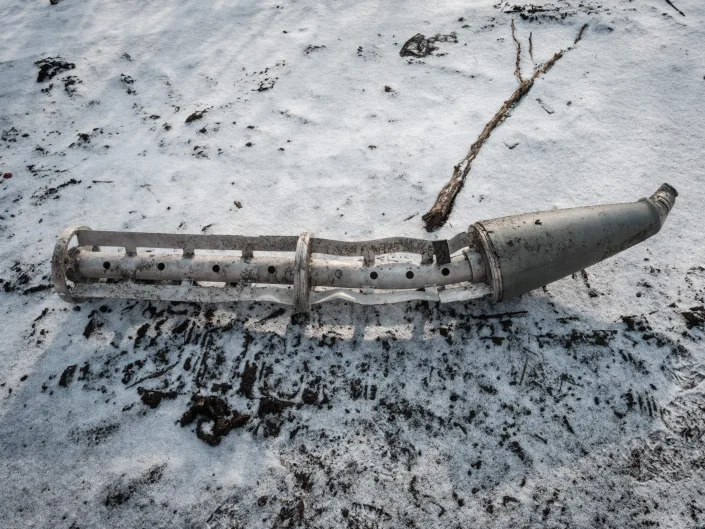Portsmouth Herald
Staying active and healthy – here are some key points to stay fit as you get older
Brandon Brown, Portsmouth Herald – July 8, 2023

Peter Hubbard, an 85-year-old Candia resident, is a big advocate for physical activity, especially as people age.
“There’s lots of research and data that shows that as you grow older, you’re going to lose muscle density and mass, but you can maintain it better through exercise,” Hubbard said. “It’s been proven that exercise improves your life expectancy, it gives you the ability to do things when you get older that you wouldn’t be able to do. You don’t have to lift all these heavy weights, and I don’t expect everybody to go out and try to be a powerlifter, but if you continue to work out and lift weights, then you can live into you 60s, 70s and 80s, and you’re going to have a better quality of life.
This Sunday, Hubbard will compete in the Powerlifting America New Hampshire State Championship at The Lift Free or Die Gym in Dover starting at 9 a.m.
Though there are three events – the squat, the bench-press and the deadlift, Hubbard is only participating in the bench-press. Hubbard’s goal is to bench more than 200 pounds. Hubbard’s wife, Nona, 61, will participate in all three events.
Although preparation for such a competition takes at least three months, Hubbard is in the gym and keeps up with physical activity year-round.
Hubbard is a role model for how to keep your body strong and fit as you enter your golden years.

It’s never too late to get physically fit
The aging process, realistically, begins in the late 20s and doesn’t become noticeable for most people until their 40s or 50s, said Dr. Caroline A. Schepker, a physiatrist who specializes in physical medicine and rehabilitation and sports medicine at Wentworth-Douglass Hospital in Dover.
“It’s usually around the age where people start to notice that they feel a little bit stiffer, maybe a little bit more easily aching, and look like they’ve lost a little muscle mass,” she said. “The best time to start prevention wise is in your 20s and 30s and kind of maximizing your muscle mass and your mobility.”
Additionally, Schepker said it’s never too late to start with things such as mobility training and strength training.
“And what that could look like is working with either a physical therapist or athletic trainer, or personal trainer to develop a whole body strength and conditioning program that also works on mobility, which is just flexibility and range of motion,” Schepker added.
“The general prescription of physical activity, whether it’s in a sport or just going to the gym or doing your own independent exercise, there’s three categories to it,” Schepker said. “One is aerobic exercise, also known as cardiovascular exercise, the second is resistance training or strength training and the third is flexibility and balance; they kind of put those three together.”
From a fitness standpoint, an ideal week involves two to three days, or 150 total minutes of aerobic exercise, at least two days a week with strength training and at least two days a week with range of motion exercises.
The most common problem Schepker sees is pain, and mostly coming from the spine and lower back, and secondly the hips, knees and shoulders.
“What that usually comes down to is a relative lack of core strength conditioning,” she said. “Even very fit active people can lose touch with their core muscles and how to optimally activate them to stabilize their spine. It can really irritate the little joints and discs in the back. So that’s probably what I see in the older, more active athletic population.”
Stretching or no stretching?
Schepker said stretching is actually one of the topics that can be controversial.
“If you really look into the research to stretching, some people say stretch and some people say don’t,” she said. “I think the reason why it’s complicated is because it’s not just stretching, but also mobility and range of motion exercises; they all have their place.”
Schepker said the research and studies shows that the recommendation is that as people get older, connective tissues, such as tendons and ligaments, naturally start to stiffen.
“Our joints generally get a little stiffer, and we lose range of motion, so it becomes important to do some stretching or range of motion medicine,” she said.
While daily is preferred, the American College of Sports Medicine recommends that adults who are 65 and older stretch at least three times per week.
“And what they recommend for that is really performing stretches of all major muscle groups, meaning the muscle groups that surround the hips, the trunk spine, shoulders and holding stretches for at least 10 to 30 seconds,” Schepker said. “Bigger muscles, like the hamstrings, may require up to 60 seconds. But, holding a stretch is called static stretching and that’s generally done after physical activity or kind of in isolation. Whereas before physical activity, it’s more important to do more kind of active range of motion instead of static holds of stretching.”
Schepker said active range of motion includes things like gently moving joints through their range of motions.
“Things like arm circles, arm swings, hip circles, just kind of getting all the joints through their range,” Schekper said.
How should ages 65 and older approach physical activity
Below is a chart that outlines what the American Heart Association and ACSM recommends for frequency, intensity and types of training for those 65 and older.

“Some older adults who have athletic or fitness backgrounds may feel comfortable looking at those guidelines and kind of being independent with them,” Schepker said. “For those who have questions or concerns about how to incorporate any piece of it, whether it’s the aerobic aspect, or the strength training, or the flexibility or the balance, usually the best place to start is speaking with your doctor and/or working with a physical therapist or athletic trainer.”
Schepker said working with a physical therapist or an athletic trainer is a good way to develop a program for themselves and get comfortable with some of the concepts to where they can branch off to do it independently.
















